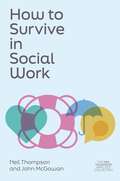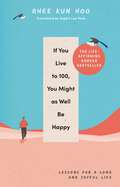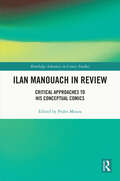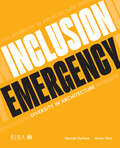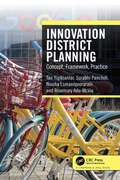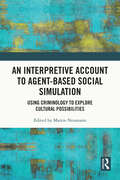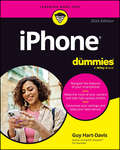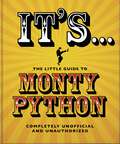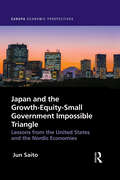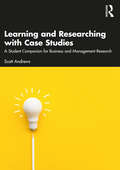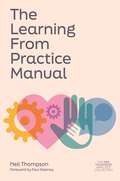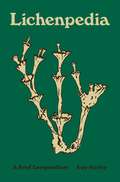- Table View
- List View
How to Survive in Social Work (The Neil Thompson Practice Collection)
by Neil Thompson John McGowanSocial worker. You're a helping hand, a rock in the tempest, a friendly face through the hard times, and a catalyst for change. But what about you? How do you keep going when the pressure just keeps rising?In this no-nonsense handbook, Neil Thompson and John McGowan distil years of social work expertise into key strategies to overcome the challenges that come with the profession. Each chapter is full of clear, practical advice on staying resilient in the face of tough situations, whether they're political, social, or economic. Handy frameworks and expert advice will strengthen your practice and give you a solid structure to build on, helping you fulfil your potential as a social worker and provide better support for your clients. Social work is tough, but with the guidance and support in this book you can learn to tackle the challenges and thrive as a force for change.
The Human Brain during the Third Trimester 225– to 235–mm Crown-Rump Lengths: Atlas of Central Nervous System Development, Volume 11
by Shirley A. Bayer Joseph AltmanThis eleventh of 15 short atlases reimagines the classic 5-volume Atlas of Human Central Nervous System Development. This volume presents serial sections from specimens between 225 mm and 235 mm with detailed annotations. An introduction summarizes human CNS developmental highlights around 6.5 months of gestation. The Glossary (available separately) gives definitions for all the terms used in this volume and all the others in the Atlas. Key Features • Classic anatomical atlases • Detailed labeling of structures in the developing brain offers updated terminology and the identification of unique developmental features, such as germinal matrices of specific neuronal populations and migratory streams of young neurons • Appeals to neuroanatomists, developmental biologists, and clinical practitioners • A valuable reference work on brain development that will be relevant for decades
The Human Brain during the Third Trimester 225– to 235–mm Crown-Rump Lengths: Atlas of Central Nervous System Development, Volume 11
by Shirley A. Bayer Joseph AltmanThis eleventh of 15 short atlases reimagines the classic 5-volume Atlas of Human Central Nervous System Development. This volume presents serial sections from specimens between 225 mm and 235 mm with detailed annotations. An introduction summarizes human CNS developmental highlights around 6.5 months of gestation. The Glossary (available separately) gives definitions for all the terms used in this volume and all the others in the Atlas. Key Features • Classic anatomical atlases • Detailed labeling of structures in the developing brain offers updated terminology and the identification of unique developmental features, such as germinal matrices of specific neuronal populations and migratory streams of young neurons • Appeals to neuroanatomists, developmental biologists, and clinical practitioners • A valuable reference work on brain development that will be relevant for decades
The Human Brain during the Third Trimester 260– to 270–mm Crown-Rump Lengths: Atlas of Central Nervous System Development, Volume 12
by Shirley A. Bayer Joseph AltmanThis twelfth of 15 short atlases reimagines the classic 5-volume Atlas of Human Central Nervous System Development. This volume presents serial sections from specimens between 260 mm and 270 mm with detailed annotations. An introduction summarizes human CNS developmental highlights around 6.5 months of gestation. The Glossary (available separately) gives definitions for all the terms used in this volume and all the others in the Atlas. Key Features • Classic anatomical atlases • Detailed labeling of structures in the developing brain offers updated terminology and the identification of unique developmental features, such as germinal matrices of specific neuronal populations and migratory streams of young neurons • Appeals to neuroanatomists, developmental biologists, and clinical practitioners • A valuable reference work on brain development that will be relevant for decades
The Human Brain during the Third Trimester 260– to 270–mm Crown-Rump Lengths: Atlas of Central Nervous System Development, Volume 12
by Shirley A. Bayer Joseph AltmanThis twelfth of 15 short atlases reimagines the classic 5-volume Atlas of Human Central Nervous System Development. This volume presents serial sections from specimens between 260 mm and 270 mm with detailed annotations. An introduction summarizes human CNS developmental highlights around 6.5 months of gestation. The Glossary (available separately) gives definitions for all the terms used in this volume and all the others in the Atlas. Key Features • Classic anatomical atlases • Detailed labeling of structures in the developing brain offers updated terminology and the identification of unique developmental features, such as germinal matrices of specific neuronal populations and migratory streams of young neurons • Appeals to neuroanatomists, developmental biologists, and clinical practitioners • A valuable reference work on brain development that will be relevant for decades
The Human Brain during the Third Trimester 310– to 350–mm Crown-Rump Lengths: Atlas of Central Nervous System Development, Volume 13
by Shirley A. Bayer Joseph AltmanThis thirteenth of 15 short atlases reimagines the classic 5 volume Atlas of Human Central Nervous System Development. This volume presents serial sections from specimens between 310 mm and 350 mm with detailed annotations. An introduction summarizes human CNS developmental highlights around 9 months of gestation. The Glossary (available separately) gives definitions for all the terms used in this volume and all the others in the Atlas. Key Features • Classic anatomical atlases • Detailed labeling of structures in the developing brain offers updated terminology and the identification of unique developmental features, such as germinal matrices of specific neuronal populations and migratory streams of young neurons • Appeals to neuroanatomists, developmental biologists, and clinical practitioners • A valuable reference work on brain development that will be relevant for decades
The Human Brain during the Third Trimester 310– to 350–mm Crown-Rump Lengths: Atlas of Central Nervous System Development, Volume 13
by Shirley A. Bayer Joseph AltmanThis thirteenth of 15 short atlases reimagines the classic 5 volume Atlas of Human Central Nervous System Development. This volume presents serial sections from specimens between 310 mm and 350 mm with detailed annotations. An introduction summarizes human CNS developmental highlights around 9 months of gestation. The Glossary (available separately) gives definitions for all the terms used in this volume and all the others in the Atlas. Key Features • Classic anatomical atlases • Detailed labeling of structures in the developing brain offers updated terminology and the identification of unique developmental features, such as germinal matrices of specific neuronal populations and migratory streams of young neurons • Appeals to neuroanatomists, developmental biologists, and clinical practitioners • A valuable reference work on brain development that will be relevant for decades
If You Live To 100, You Might As Well Be Happy: Lessons for a Long and Joyful Life: The Korean Bestseller
by Rhee Kun HooAs an old Korean saying goes...‘You learn to use gums in place of teeth.’Rhee Kun Hoo was in his seventies and retired from a prestigious career in psychiatry when he took up writing. In his youth Professor Rhee lived an extraordinary life, filled with action and purpose. He served time in prison for opposing his country’s totalitarian government. He led the efforts to fix South Korea’s fledgling mental health system. He built a family and raised four kids.Now in his twilight years, having, much to his surprise, become a bestselling, beloved writer in South Korea, Rhee turns his pen to the often-overlooked value of ageing. Here he shares his wisdom and philosophy for finding a life well-lived, exploring forgiveness, how to persevere (but also know when to quit), facing your insecurities and opening yourself to the simple joys available to you every day.This comforting Korean bestseller offers guidance for attaining ordinary happiness at any age and shows us that life is a story worth reading until the very last page.
Ilan Manouach in Review: Critical Approaches to his Conceptual Comics (Routledge Advances in Comics Studies)
by Pedro MouraThis book takes an interdisciplinary and diverse critical look at the work of comic artist Ilan Manouach, situating it within the avant-garde movement more broadly. An international team of authors engages with the topic from diverse theoretical approaches, from traditional narratology and aesthetic close readings of some of Manouach's books, engaging with comics' own distinctive history, modes of production, circulation and reception, to perspectives from disability studies, post-colonial studies, technological criticism, media ecology, ontography, posthumanist philosophy, and issues of materiality and media specificity. This innovative and timely volume will interest students and scholars of comic studies, media studies, media ecology, literature, cultural studies, and visual studies.
Ilan Manouach in Review: Critical Approaches to his Conceptual Comics (Routledge Advances in Comics Studies)
This book takes an interdisciplinary and diverse critical look at the work of comic artist Ilan Manouach, situating it within the avant-garde movement more broadly. An international team of authors engages with the topic from diverse theoretical approaches, from traditional narratology and aesthetic close readings of some of Manouach's books, engaging with comics' own distinctive history, modes of production, circulation and reception, to perspectives from disability studies, post-colonial studies, technological criticism, media ecology, ontography, posthumanist philosophy, and issues of materiality and media specificity. This innovative and timely volume will interest students and scholars of comic studies, media studies, media ecology, literature, cultural studies, and visual studies.
Inclusion Emergency: Diversity in architecture
by Hannah Durham Grace ChoiArchitecture is at a tipping point. Voices of the under-represented have been increasing in volume and are agitated for change. If we don’t collectively listen, re-adjust and change our future outlook, we limit the potential relevance of the profession in today’s society and, ultimately, the places we create. Capturing insight from leading voices in the profession, this book encourages understanding, reflection and addresses critical questions, providing steps towards meaningful change. It will help those who are under-represented to find role models, context and tools & to be confident, supported and valued. Building understanding for those more privileged to acknowledge bias, it will enable mitigation and awareness of the issues to encourage meaningful action. This is a call for change. Now.
Inclusion Emergency: Diversity in architecture
Architecture is at a tipping point. Voices of the under-represented have been increasing in volume and are agitated for change. If we don’t collectively listen, re-adjust and change our future outlook, we limit the potential relevance of the profession in today’s society and, ultimately, the places we create. Capturing insight from leading voices in the profession, this book encourages understanding, reflection and addresses critical questions, providing steps towards meaningful change. It will help those who are under-represented to find role models, context and tools & to be confident, supported and valued. Building understanding for those more privileged to acknowledge bias, it will enable mitigation and awareness of the issues to encourage meaningful action. This is a call for change. Now.
Innovation District Planning: Concept, Framework, Practice
by Tan Yigitcanlar Surabhi Pancholi Niusha Esmaeilpoorarabi Rosemary Adu-McVieThis book aims to fill the knowledge gap on how to plan, develop and manage innovation districts that are competitive in terms of both productivity and quality of living, justifying the massive investment put into place and at the same time doing both in a delicate and harmonious way.There is a need for smart urban land use that is wired with both hard infrastructures (e.g., telecommunication and transport) and soft infrastructures (e.g., diversity and tolerance). The reader learns this knowledge through conceptual expansions for key insights, frameworks for potential and performance assessment and best practices for global innovation districts. The authors begin innovation district planning with the role and effectiveness of planning a branding in the development of innovation districts. The next key topic of place making is recognised as a key strategy for supporting knowledge generation and innovation activities in the contemporary innovation districts. Another important topic is place quality where the reader learns to identify and classify indicators of place quality by studying global innovation districts best practices. The reader also expands their understanding on the classification of innovation districts based on their key characteristics through a methodological approach. The book concludes with district smartness studied through the socio-cultural role played by anchor universities in facilitating place making in innovation districts. Smart campuses, enabled by digital transformation opportunities in higher education, are seen as a miniature replica of smart cities and serve as living labs for smart technology.The book serves as a repository for scholars, researchers, postgraduate and undergraduate students as it communicates the complex innovation district phenomenon in an easy-to-digest form by providing both the big picture view and specifics of each component of that view.
Innovation District Planning: Concept, Framework, Practice
by Tan Yigitcanlar Surabhi Pancholi Niusha Esmaeilpoorarabi Rosemary Adu-McVieThis book aims to fill the knowledge gap on how to plan, develop and manage innovation districts that are competitive in terms of both productivity and quality of living, justifying the massive investment put into place and at the same time doing both in a delicate and harmonious way.There is a need for smart urban land use that is wired with both hard infrastructures (e.g., telecommunication and transport) and soft infrastructures (e.g., diversity and tolerance). The reader learns this knowledge through conceptual expansions for key insights, frameworks for potential and performance assessment and best practices for global innovation districts. The authors begin innovation district planning with the role and effectiveness of planning a branding in the development of innovation districts. The next key topic of place making is recognised as a key strategy for supporting knowledge generation and innovation activities in the contemporary innovation districts. Another important topic is place quality where the reader learns to identify and classify indicators of place quality by studying global innovation districts best practices. The reader also expands their understanding on the classification of innovation districts based on their key characteristics through a methodological approach. The book concludes with district smartness studied through the socio-cultural role played by anchor universities in facilitating place making in innovation districts. Smart campuses, enabled by digital transformation opportunities in higher education, are seen as a miniature replica of smart cities and serve as living labs for smart technology.The book serves as a repository for scholars, researchers, postgraduate and undergraduate students as it communicates the complex innovation district phenomenon in an easy-to-digest form by providing both the big picture view and specifics of each component of that view.
An Interpretive Account to Agent-based Social Simulation: Using Criminology to Explore Cultural Possibilities
by Martin NeumannUsing the investigation of criminal culture as an example application, this edited volume presents a novel approach to agent-based simulation: interpretive agent-based social simulation as a methodological and transdisciplinary approach to examining the potential of qualitative data and methods for agent-based modelling (ABM). Featuring updated articles as well as original chapters which provide a cohesive and novel approach to the digital humanities, the book challenges the common conviction that hermeneutics and simulation are two mutually exclusive ways to understand and explain human behaviour and social change. Exploring how methodology benefits from taking cultural complexities into account and bringing these methods together in an innovative combination of qualitative-hermeneutic and digital techniques, the book unites experts in the field to connect ABM to narrative theories, thereby providing a novel tool for cultural studies. An innovative methodological contribution to narrative theory, this volume will be of primary benefit to researchers, scholars, and academics in the fields of ABM, hermeneutics, and criminology. The book will also appeal to those working in policing, security, and forensic consultation.
An Interpretive Account to Agent-based Social Simulation: Using Criminology to Explore Cultural Possibilities
by Martin NeumannUsing the investigation of criminal culture as an example application, this edited volume presents a novel approach to agent-based simulation: interpretive agent-based social simulation as a methodological and transdisciplinary approach to examining the potential of qualitative data and methods for agent-based modelling (ABM). Featuring updated articles as well as original chapters which provide a cohesive and novel approach to the digital humanities, the book challenges the common conviction that hermeneutics and simulation are two mutually exclusive ways to understand and explain human behaviour and social change. Exploring how methodology benefits from taking cultural complexities into account and bringing these methods together in an innovative combination of qualitative-hermeneutic and digital techniques, the book unites experts in the field to connect ABM to narrative theories, thereby providing a novel tool for cultural studies. An innovative methodological contribution to narrative theory, this volume will be of primary benefit to researchers, scholars, and academics in the fields of ABM, hermeneutics, and criminology. The book will also appeal to those working in policing, security, and forensic consultation.
iPhone For Dummies
by Guy Hart-DavisThe smart guide to your smartphone—updated for the latest iOS and iPhone releases Fully updated to cover the newest features of iOS and the latest iPhone models, iPhone For Dummies helps you keep in touch with family and friends, take pictures, play games, follow the news, stream music and video, get a little work done, and just about everything else. This user-friendly guide walks you through the basics of calling, texting, FaceTiming, and discovering all the cool things your iPhone can do. You’ll benefit from the insight of a longtime Apple expert on how to make the most of your new (or old) iPhone and its features. These wildly popular devices get more useful all the time. Find out what’s in store for you with Apple’s latest releases—even if you’ve never owned an iPhone before. Discover the features of the latest iOS release and iPhone models Customize your settings and keep your phone secure Make the most of your camera and shoot high-quality videos Find little-known utilities and apps that will make your life easieriPhone For Dummies is the one-stop-shop for information on getting the most out of your new iPhone. New and inexperienced iPhone users will love this book.
iPhone For Dummies
by Guy Hart-DavisThe smart guide to your smartphone—updated for the latest iOS and iPhone releases Fully updated to cover the newest features of iOS and the latest iPhone models, iPhone For Dummies helps you keep in touch with family and friends, take pictures, play games, follow the news, stream music and video, get a little work done, and just about everything else. This user-friendly guide walks you through the basics of calling, texting, FaceTiming, and discovering all the cool things your iPhone can do. You’ll benefit from the insight of a longtime Apple expert on how to make the most of your new (or old) iPhone and its features. These wildly popular devices get more useful all the time. Find out what’s in store for you with Apple’s latest releases—even if you’ve never owned an iPhone before. Discover the features of the latest iOS release and iPhone models Customize your settings and keep your phone secure Make the most of your camera and shoot high-quality videos Find little-known utilities and apps that will make your life easieriPhone For Dummies is the one-stop-shop for information on getting the most out of your new iPhone. New and inexperienced iPhone users will love this book.
It's... The Little Guide to Monty Python: ... And Now For Something Completely Different (The\little Book Of... Ser.)
by Orange Hippo!Made from the paper of the mightiest tree in a forest and cut to size with a herring, this Little Guide to Monty Python may be only-ever-so slightly bigger than one of Mr Creosote's wafer-sized mints, but it's packed with enough preposterous comedy power to keep Pythonites stuffed with laughter until breakfast.Monty Python, of course, do not require an introduction. Python are the UK's original legends of comedy; as influential as they are innovative, as incomparable as they are intelligent. For sixty years, their unique brand of ensemble silliness has travelled the world as much as Michael Palin's toothbrush, their legacy growing with each generation.This tiny time can barely contain the 185 or so classic quotes, one liners, character flaws and jokes that made the troupe so famous, all revealed in the profoundly preposterous wit, wisdom and words of the Pythons themselves.All together now... "Always look on the bright side of life..."'I always wanted to be an explorer, but it seemed I was doomed to be nothing more than a very silly person.' Michael Palin
Japan and the Growth-Equity-Small Government Impossible Triangle: Lessons from the United States and the Nordic Economies (Europa Economic Perspectives)
by Jun SaitoThis volume examines and analyzes the current situation of, and the future prospects for, the Japanese economy, particularly in the context of inequality. The country's economy is facing the ageing and the shrinking of its population, both of which will reduce the potential growth rate, which has already become very low. By introducing a new policy framework, namely the `Equity-Growth-Small Government Impossible Triangle', based on reviewing, comparing and contrasting the policies of the United States, the Nordic economies and Japan, the book proposes a policy direction that could be pursued by Japan. If Japan wants to sustain growth while preventing inequality to widen and preserve an egalitarian society, there is no other choice but to further promote globalization and innovation and, at the same time, surrender preserving a small government by reforming itself to become a dynamic and resilient welfare state. The volume will be an invaluable resource for students, professionals and researchers with an interest in economics, inequality, the Japanese economy and comparative economic policies.
Japan and the Growth-Equity-Small Government Impossible Triangle: Lessons from the United States and the Nordic Economies (Europa Economic Perspectives)
by Jun SaitoThis volume examines and analyzes the current situation of, and the future prospects for, the Japanese economy, particularly in the context of inequality. The country's economy is facing the ageing and the shrinking of its population, both of which will reduce the potential growth rate, which has already become very low. By introducing a new policy framework, namely the `Equity-Growth-Small Government Impossible Triangle', based on reviewing, comparing and contrasting the policies of the United States, the Nordic economies and Japan, the book proposes a policy direction that could be pursued by Japan. If Japan wants to sustain growth while preventing inequality to widen and preserve an egalitarian society, there is no other choice but to further promote globalization and innovation and, at the same time, surrender preserving a small government by reforming itself to become a dynamic and resilient welfare state. The volume will be an invaluable resource for students, professionals and researchers with an interest in economics, inequality, the Japanese economy and comparative economic policies.
Learning and Researching with Case Studies: A Student Companion for Business and Management Research
by Scott AndrewsThis companion takes the student through the different approaches to working with cases in the classroom, virtually and for research purposes. Capturing insights and best practices shared by scholars of the case method from around the world, this book aims to:• equip students to work with and analyse case studies as part of their programme of study;• adapt student approaches to online learning with cases;• guide students on how to use case studies as a form of assessment;• help students looking to adopt a case study approach to a research project.These aims are framed in the sections of the book. Each section contains reflections from academics across the world, personal insights and lessons learnt from case sessions, templates, and exercises to develop your own skills in learning or researching with cases. Full examples showcase the nature of cases by type and format: short incident, exercise case, situation case; single, sequential and digital cases.This text is for undergraduate and postgraduate Business and Management students, those studying as part of executive education programmes, MBA students, and academics who are using or preparing to use case studies in their learning or research. Online resources include PowerPoint slides, video material and example case studies from around the world.
Learning and Researching with Case Studies: A Student Companion for Business and Management Research
by Scott AndrewsThis companion takes the student through the different approaches to working with cases in the classroom, virtually and for research purposes. Capturing insights and best practices shared by scholars of the case method from around the world, this book aims to:• equip students to work with and analyse case studies as part of their programme of study;• adapt student approaches to online learning with cases;• guide students on how to use case studies as a form of assessment;• help students looking to adopt a case study approach to a research project.These aims are framed in the sections of the book. Each section contains reflections from academics across the world, personal insights and lessons learnt from case sessions, templates, and exercises to develop your own skills in learning or researching with cases. Full examples showcase the nature of cases by type and format: short incident, exercise case, situation case; single, sequential and digital cases.This text is for undergraduate and postgraduate Business and Management students, those studying as part of executive education programmes, MBA students, and academics who are using or preparing to use case studies in their learning or research. Online resources include PowerPoint slides, video material and example case studies from around the world.
The Learning From Practice Manual (The Neil Thompson Practice Collection)
by Neil ThompsonNeil Thompson sets out what you really need to know about supporting further learning during placement and practice. Stripping away the confusion and anxiety about 'what next?', this manual goes back to the core theories of how learning works in the first place, and how you can synchronise that with values and reflective practice to help your students and colleagues reach their professional goals. Summaries illustrate and reinforce the guidance, creating a set of easy-to-follow strategies for effective workplace development mentoring.Accessible explanations guide you through the theory and practice, covering everything from fostering a learning environment to troubleshooting difficulties and encouraging a culture of self-directed learning. Grow your mentoring skills and help your colleagues get to grips with not just what to learn, but how to learn it and make it stick.
Lichenpedia: A Brief Compendium (Pedia Books #11)
by Kay HurleyAn illustrated mini-encyclopedia about the weird and wonderful world of lichensLichenpedia is a delightfully entertaining and beautifully illustrated A–Z treasury about the strange, obscure, and remarkable world of lichens, from their unique and essential roles in nature and the ways they are used in dyeing, brewing, and drug-making to how they have inspired writers and artists, from Henry David Thoreau to modern painters.In 100 brief entries written in a vivid, lively style, Kay Hurley introduces key aspects of lichen biology, environmental roles, emerging uses, scientific history, and myth. She describes the variety of forms that lichens take, from leafy to filamentous to things reminiscent of skin diseases, with imaginative names like witch&’s hair. She explains the surprising ways that birds and beasts—from reindeer and moose down to tiny tardigrades—use lichens, and how lichens survive in extreme environments, from deserts to Antarctica to outer space. Hurley also introduces some of the innovators who have advanced the knowledge of lichens, from the ancient Greek philosopher Theophrastus to today&’s professional lichenologists.With charming drawings by Susan Adele Edwards, Lichenpedia promises to put you in touch with the natural world in a new way by opening your eyes to these vital organisms, which are all around us, hidden in plain sight.Features a cloth cover with an elaborate foil-stamped design
